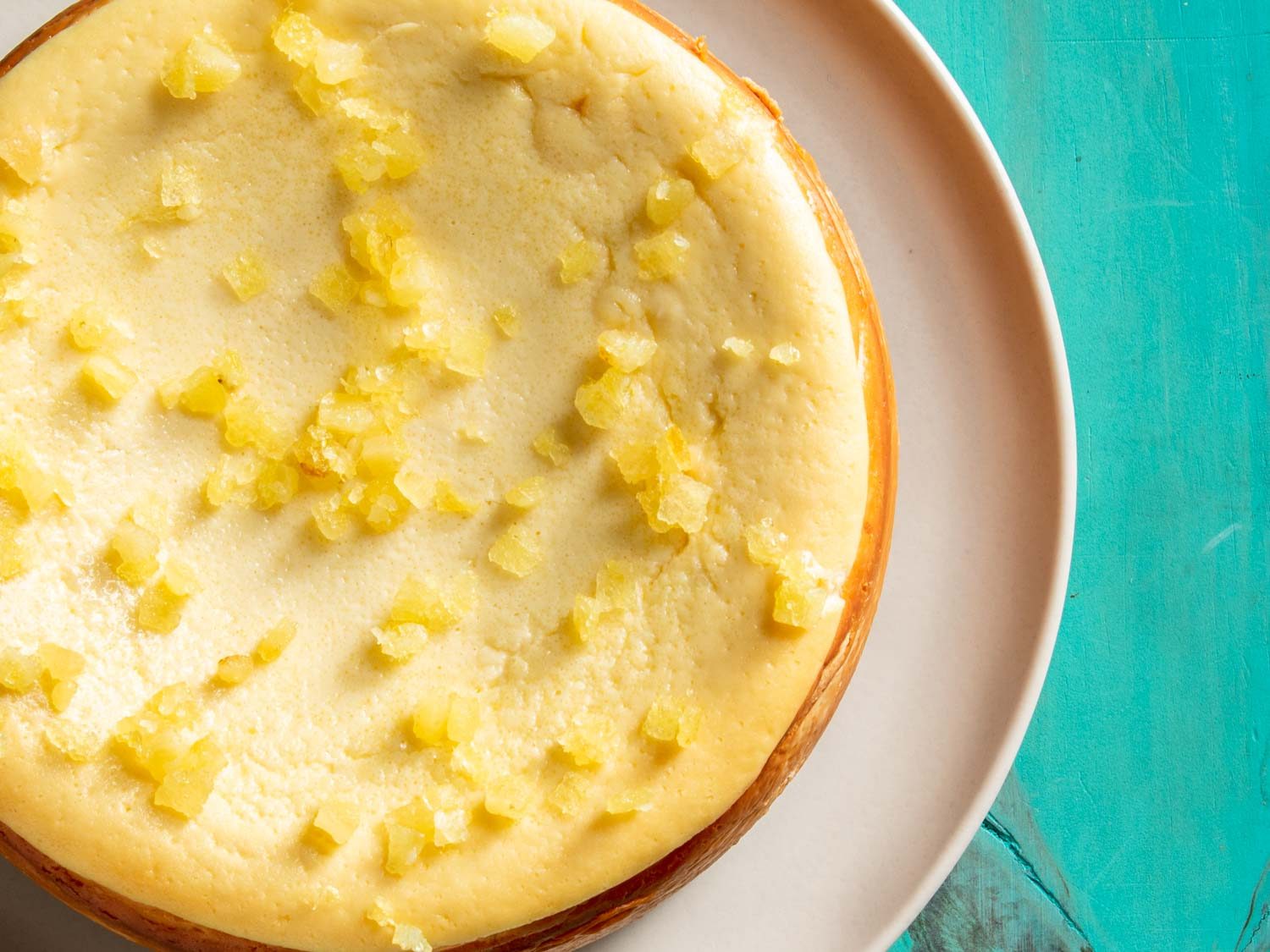
Broadly speaking, I don’t often publish recipes for minty, citrusy, or nutty cakes and cookies, since these flavors are easily achieved using essential oils, extracts, and flower waters rather than technique. Any cake can be an almond cake if you’ve got the right extract!
When I make exceptions to this rule, it’s for recipes that offer a more holistic approach—for example, a coconut layer cake made with aromatic coconut oil, coconut milk, and ground coconut, rather than extract alone.
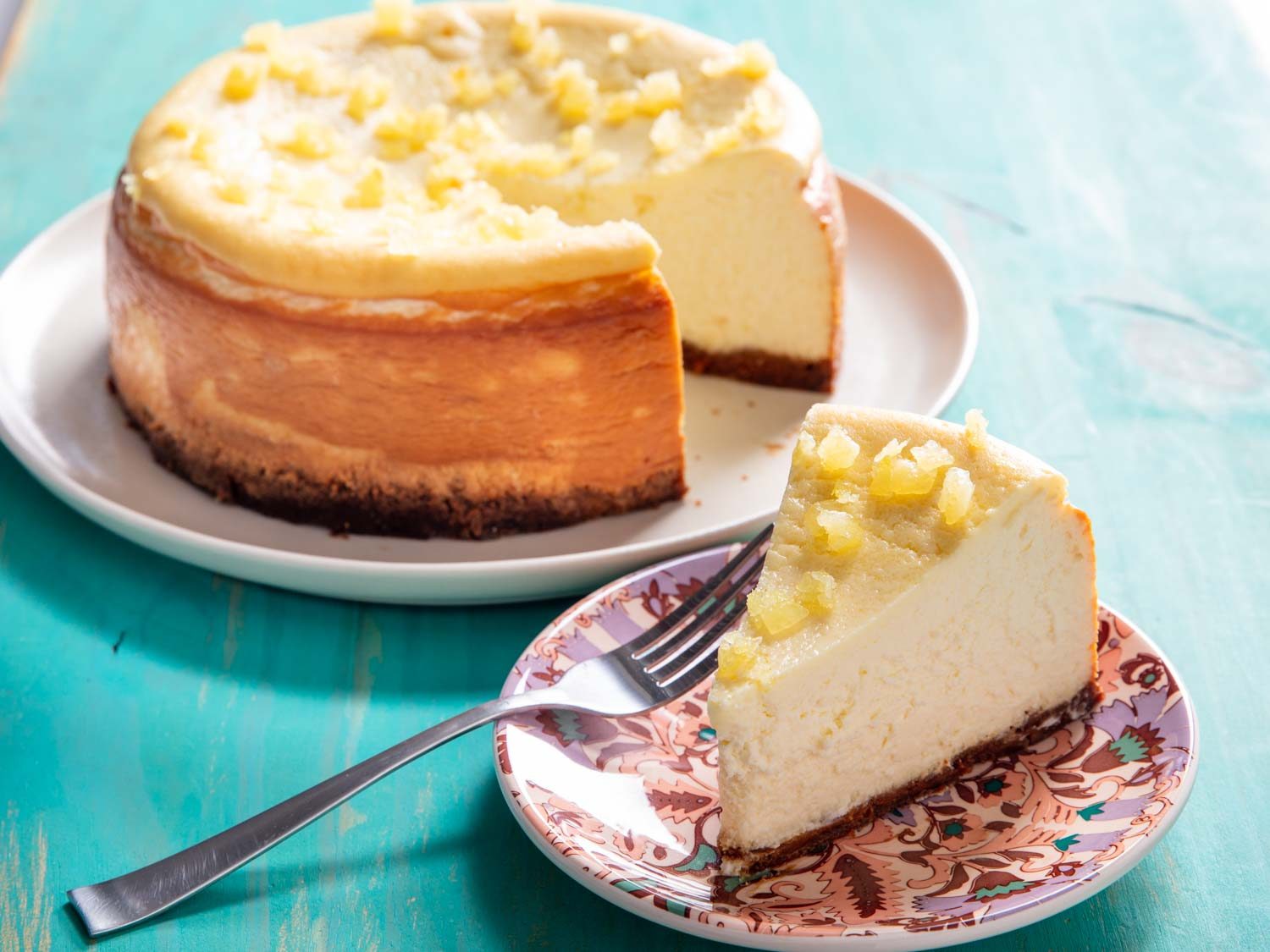
That’s the angle I decided to take here. The result is a lemon cheesecake that owes its complex flavor profile to freshly squeezed juice, grated zest, essential oil, and flower water. That combination creates layers of acidity, flavor, and aroma that give the cheesecake a lemon flavor that isn’t too astringent, bitter, or harsh.
While these ingredients could certainly be incorporated to taste in my classic New York-style cheesecake, I wanted to match the light and refreshing qualities of lemon with a cheesecake that would be a little more cottony and light, rather than creamy and rich. Which brings us to the secret ingredient: ricotta.
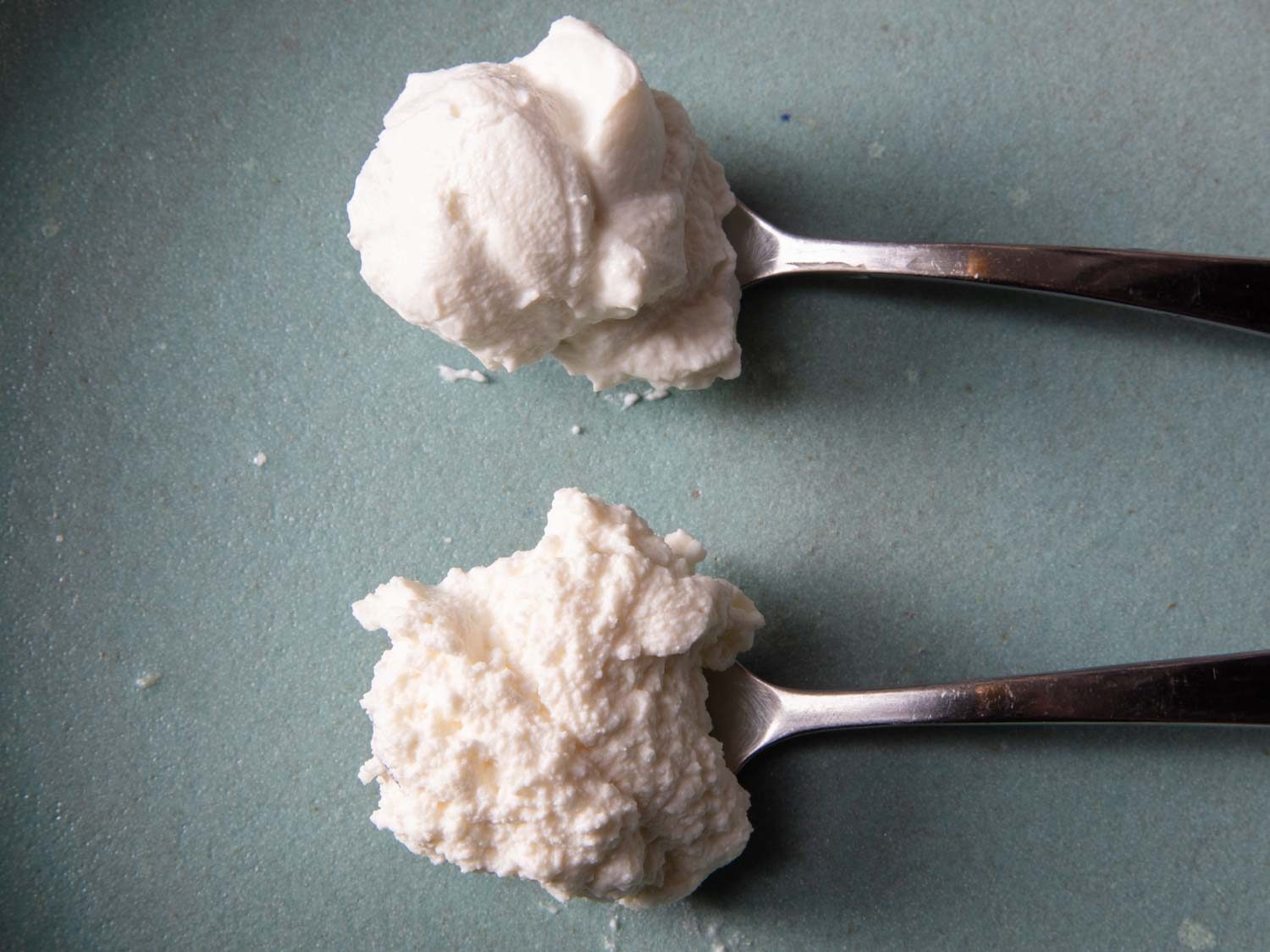
Ricotta can be a tricky ingredient to work with, as its flavor, texture, and appearance (not to mention its composition in terms of moisture, fat, and protein) can vary so widely from one brand to another, resulting in a cheesecake that’s hardly ever the same from batch to batch.
And yet those different expressions needn’t be a bad thing; so long as the recipe is rooted in a good-quality ricotta that you love, the results will always be delicious. What’s important is to use a brand of ricotta you absolutely love; if you find one that feels grainy or chalky, it won’t get any better in cheesecake form. So play the field; try some different styles, and know that my brown butter ricotta cookies CAN transform grainy ricotta into great cookies, so there will always be a home for the brands that don’t make the grade for cheesecake.
Having tested more than a few brands for this recipe, my favorites have been Murray’s and Bel Gioioso (both found in the deli section of my local Kroger, rather than in the dairy case), Calabro, and White Rose. On my last visit to New York, I also scored a few tubs of sheep’s whey ricotta at Sahadi’s from The Ricotta & Cheese Factory. We don’t brand-shame on Serious Eats, but two of the most readily available organic ricotta brands here in the US both proved to be abysmally gritty.
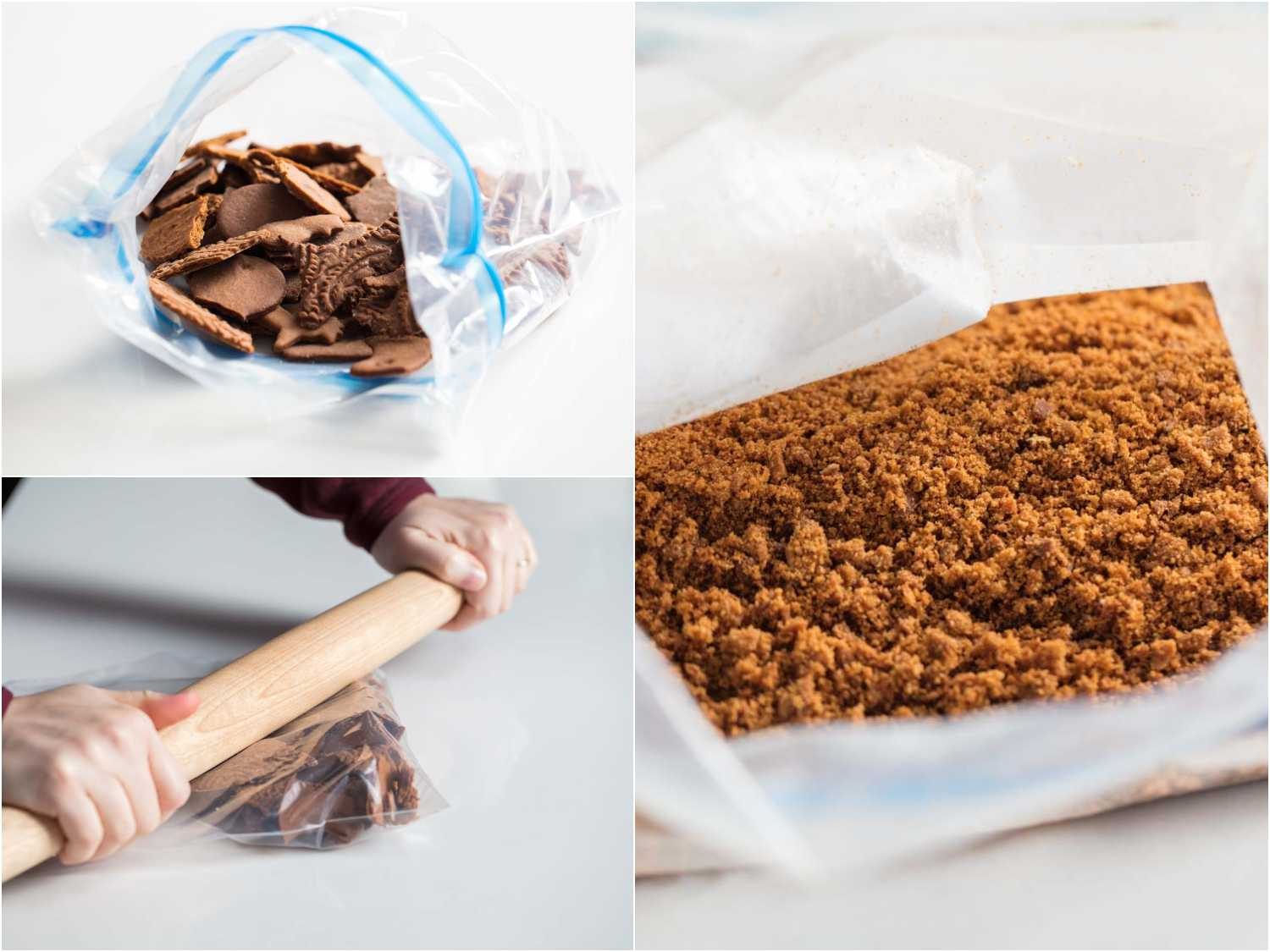
The true foundation for this cheesecake is the crust, which you can create with almost any sort of cookie crumb—provided you like the idea of how it sounds with lemon. My personal favorites have been homemade gingersnaps, gingerbread, lemon-ginger creams (wafers only), Biscoff-style speculoos cookies, and homemade graham crackers, although store-bought or gluten-free alternatives to any of these options will work equally well.
For me, the sharp note of spice in gingerbread is the perfect note of contrast for lemon at any time of the year, but it’s a particularly convenient option if that’s something you bake often around the holidays. Whatever type of crumbs you choose, simply combine them with a little melted butter and a pinch of salt in the bottom of a cheesecake pan.
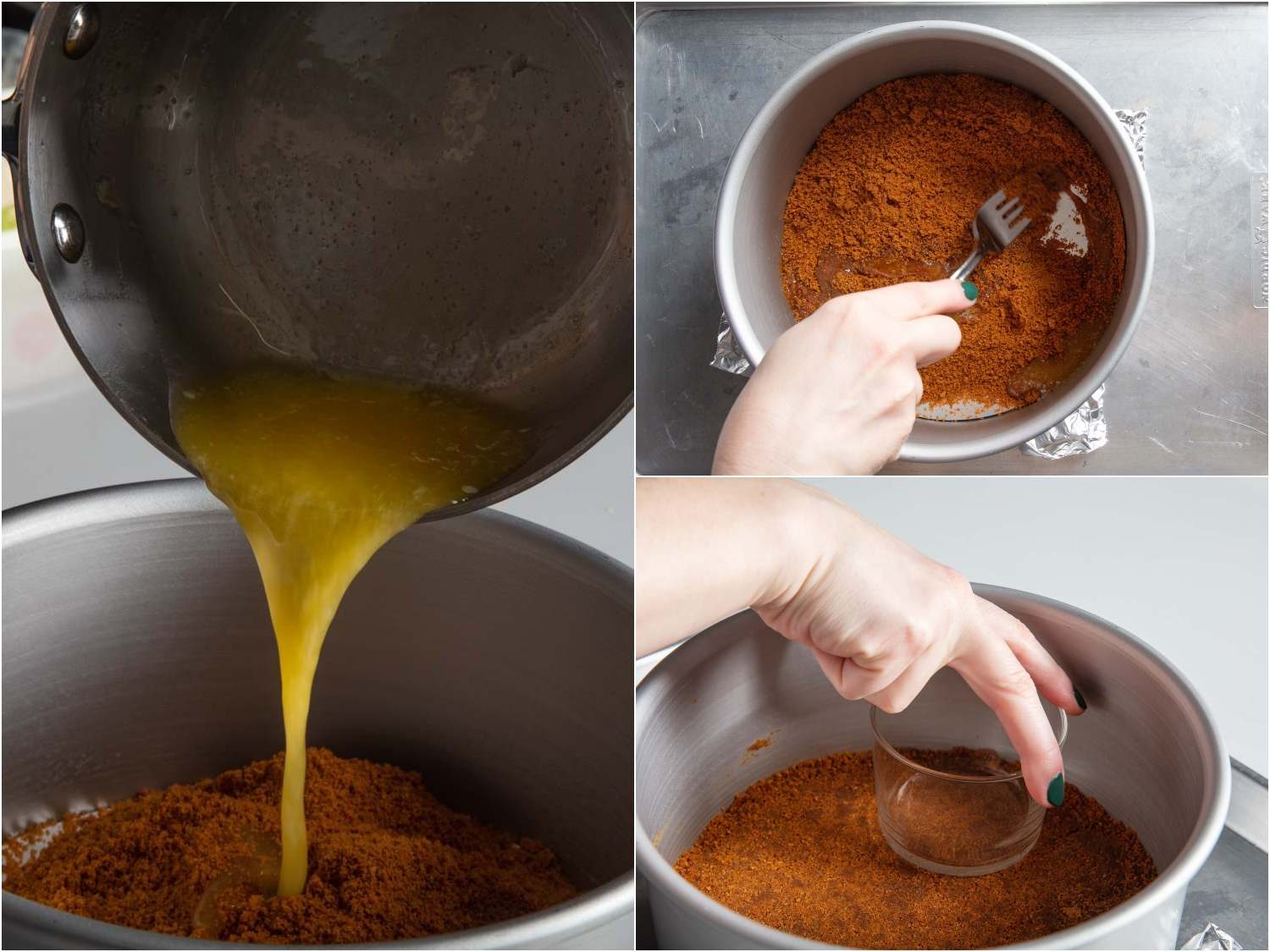
Here, I’m using my signature eight- by four-inch loose-bottom pan from LloydPans, but this recipe is more flexible than some of my others in terms of the exact pan involved. I do find the loose bottom–style to be the most convenient for unmolding, and I like how the added height of a four-inch pan keeps this cheesecake so creamy and thick.
Unlike my other recipes, I like preparing this one in a 14-cup food processor; its blades effortlessly emulsify the cream cheese and ricotta without aeration while better distributing the bits of zest (which tend to get stuck along the paddles of a stand mixer).
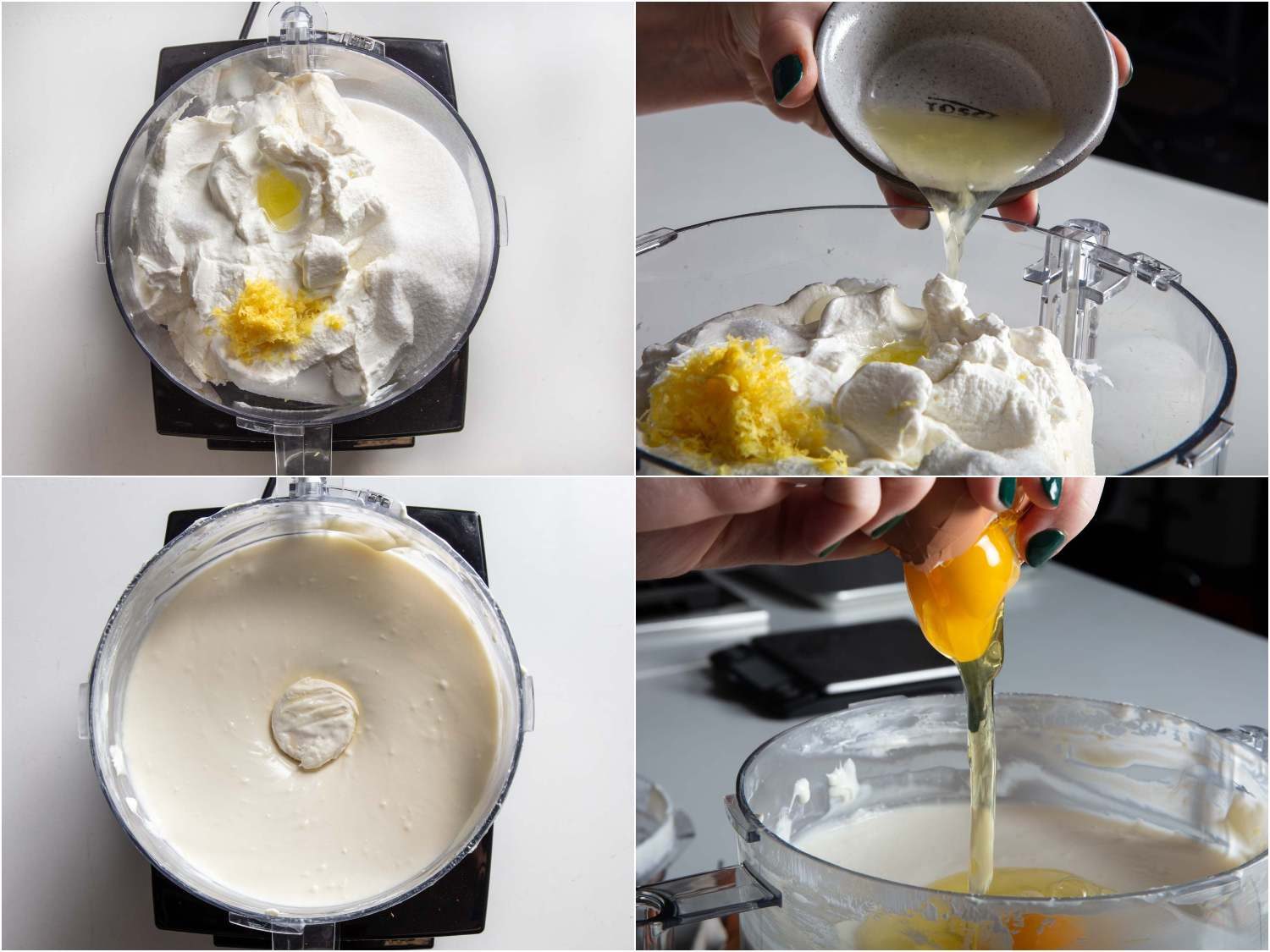
A food processor also slashes prep time for the batter down to about 90 seconds; just blitz the cheeses, sugar, and flavoring together until smooth, then quickly pulse in the whole eggs, and pour the batter into the prepared pan.
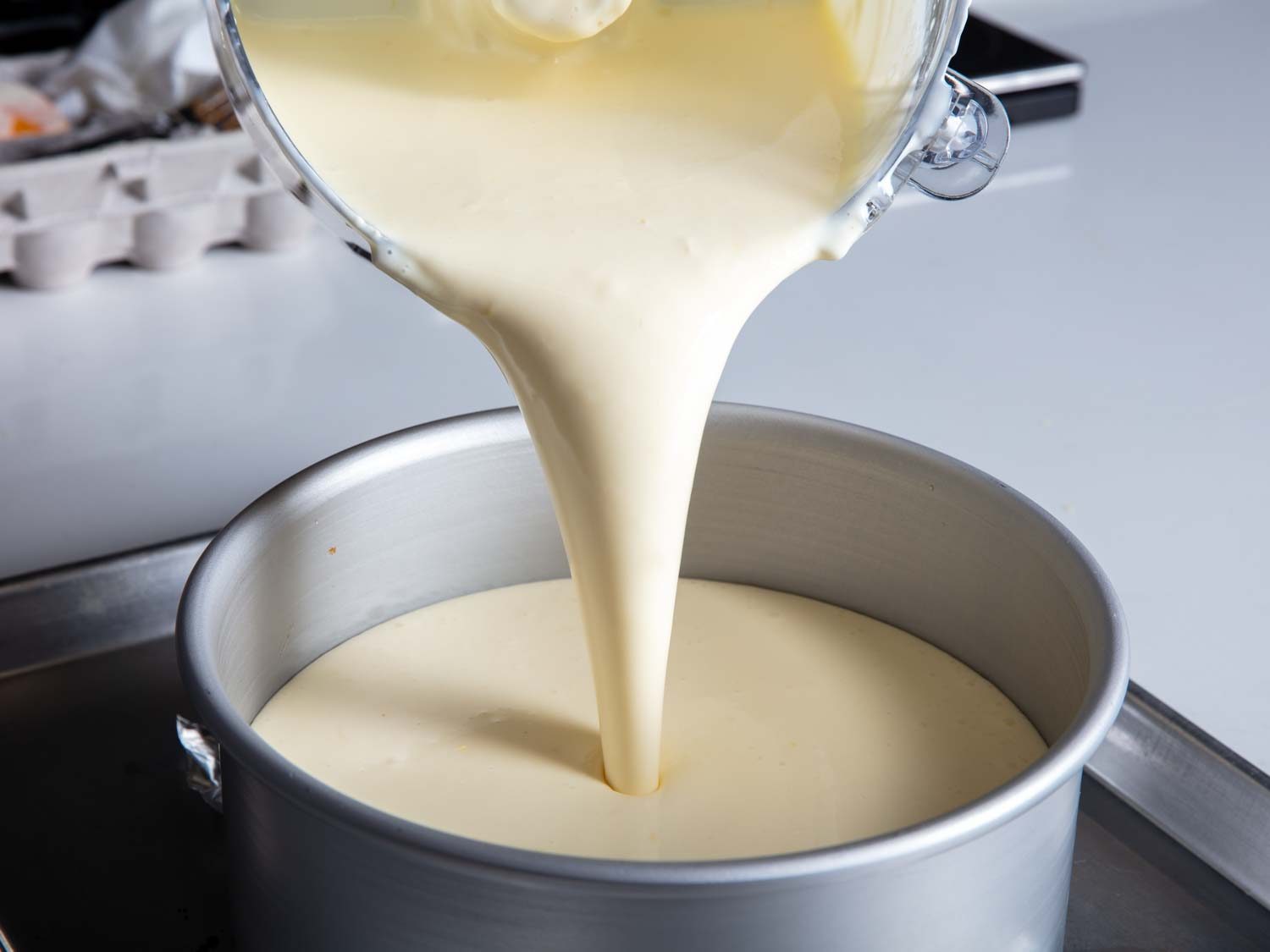
To keep the cheesecake’s texture dense and thick, I bake it low and slow at just 225°F, which obviates the need for a water bath, further simplifying the recipe. The cheesecake’s ready when it’s bouncy and firm to the touch around the edges, although a little wobbly in the dead center, with a pale color throughout.
This translates to an internal temperature of about 155°F, which generally takes me about three-and-a-half hours to reach, but the exact timing will vary depending on your cheesecake pan and the accuracy of your oven, so keep a close eye on the cheesecake as it bakes and pay more attention to the physical cues than your clock.
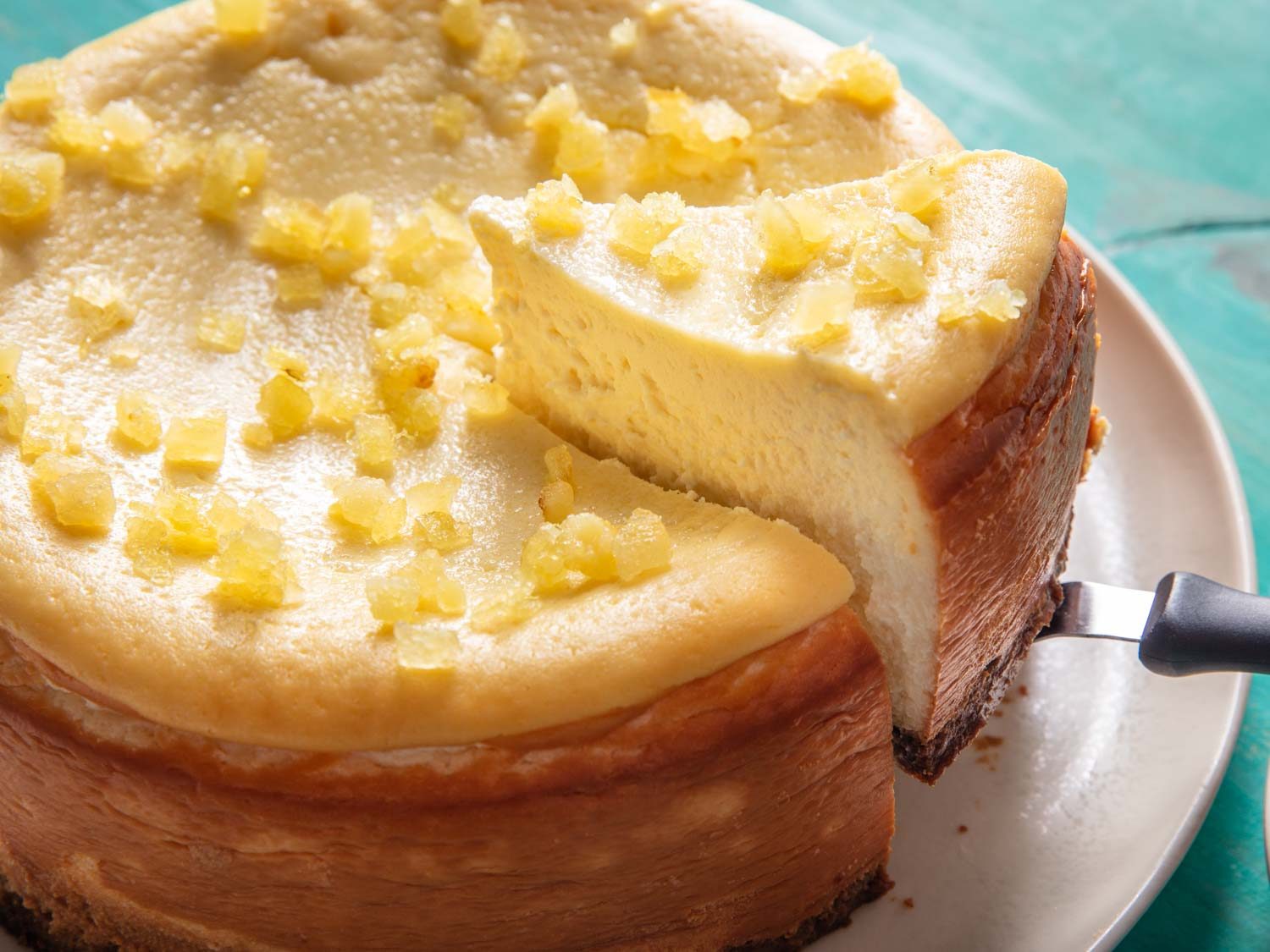
Once the cheesecake has fully cooled, it’s a cinch to unmold from a loose-bottom pan: just place it over a large jar or can and slide off the sides. To play up the lemony flavor, try serving it with a sprinkling of candied lemon peel or spoonfuls of your favorite jam. If you’re feeling fancy, my fruit syrup for ice cream serves nicely as a glaze, and around the holidays, the cranberry jam from my cranberry trifle is a bang-up topping for a lemon cheesecake, too.
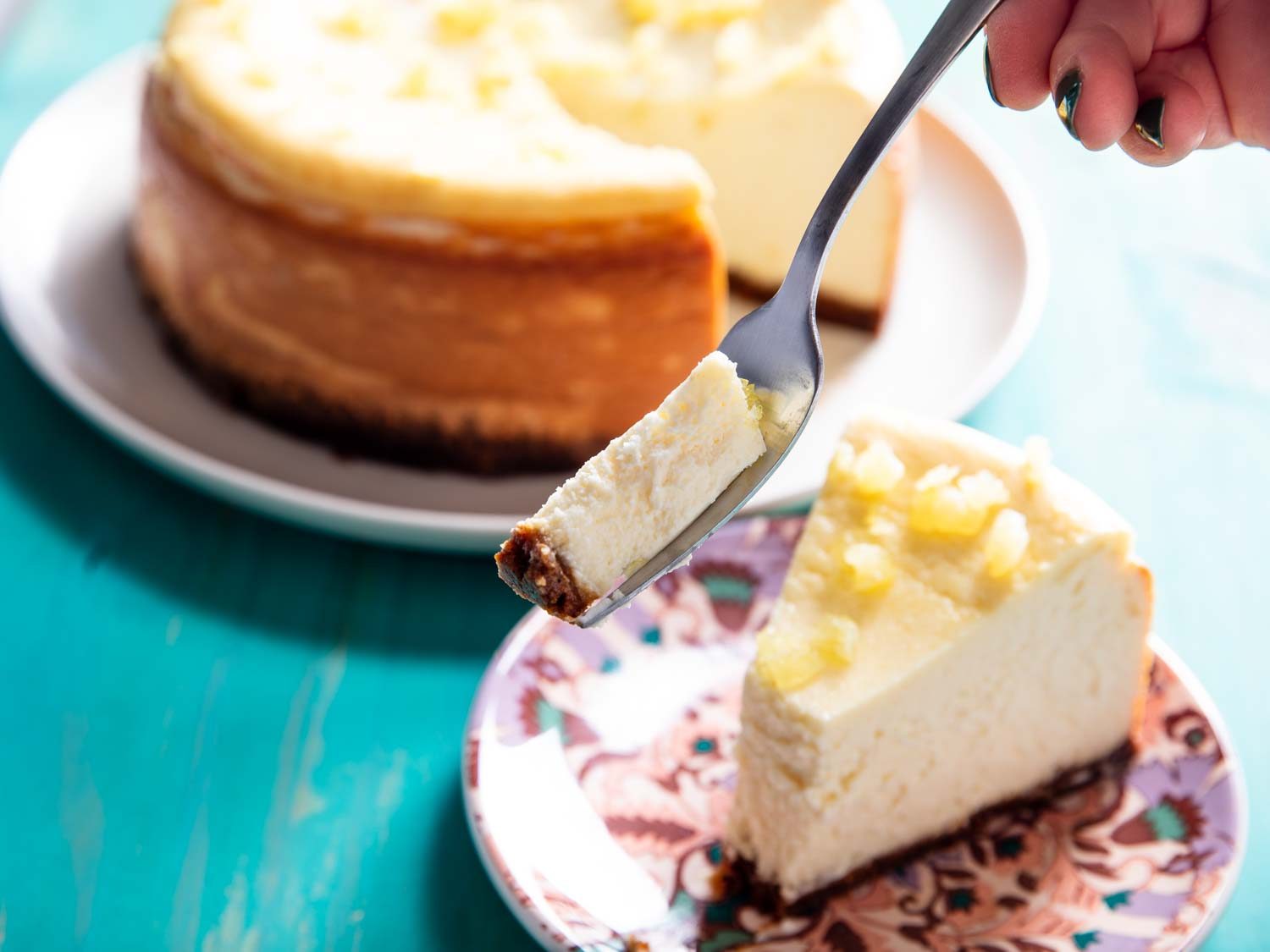
All products linked here have been independently selected by our editors. We may earn a commission on purchases, as described in our affiliate policy.
Source link